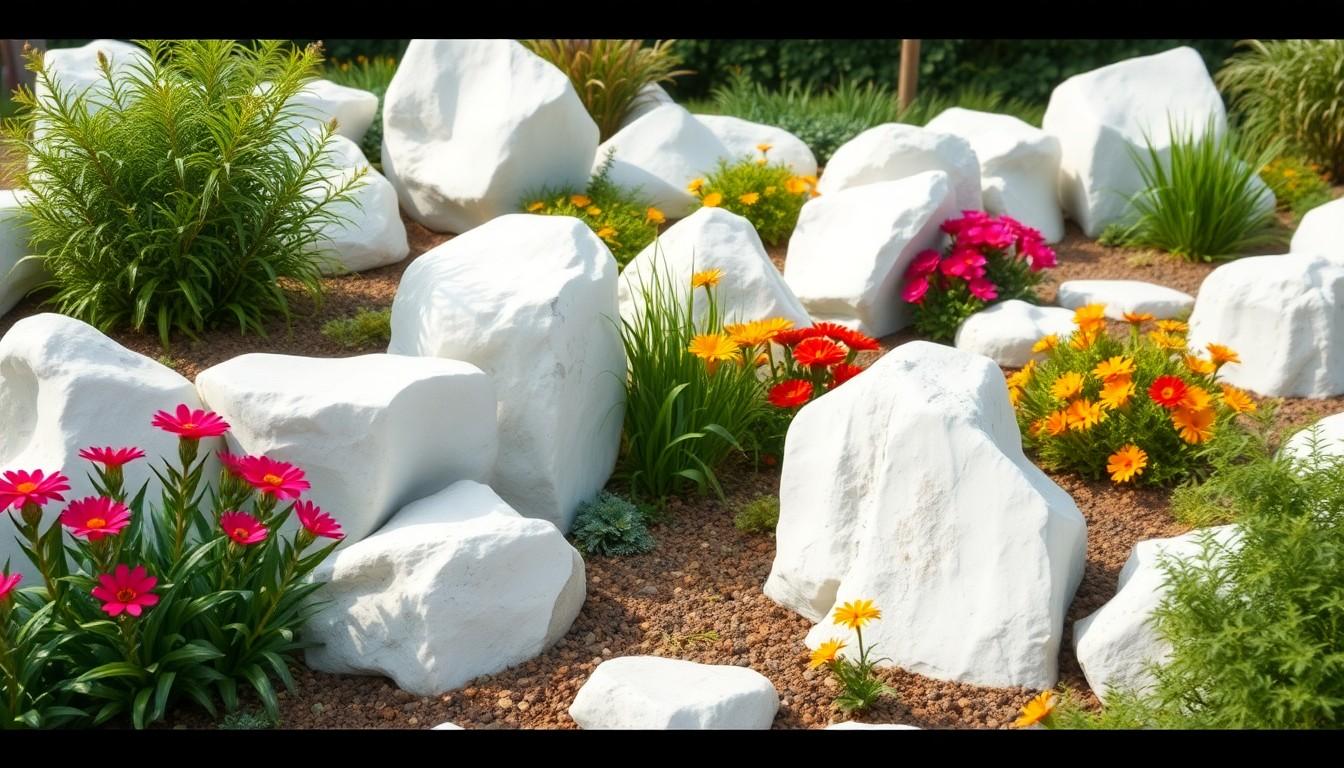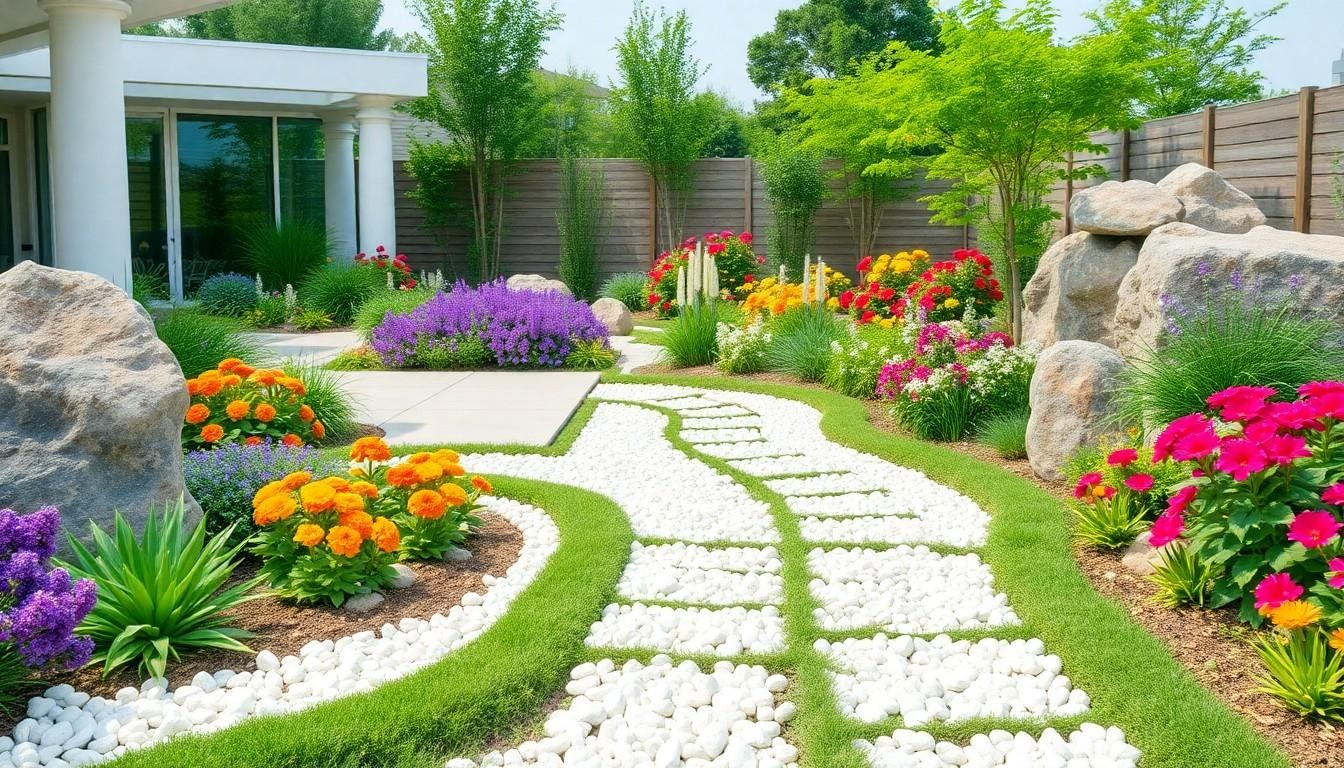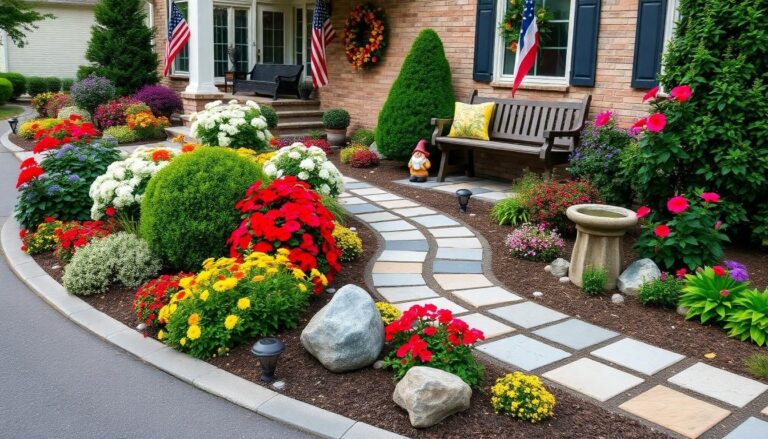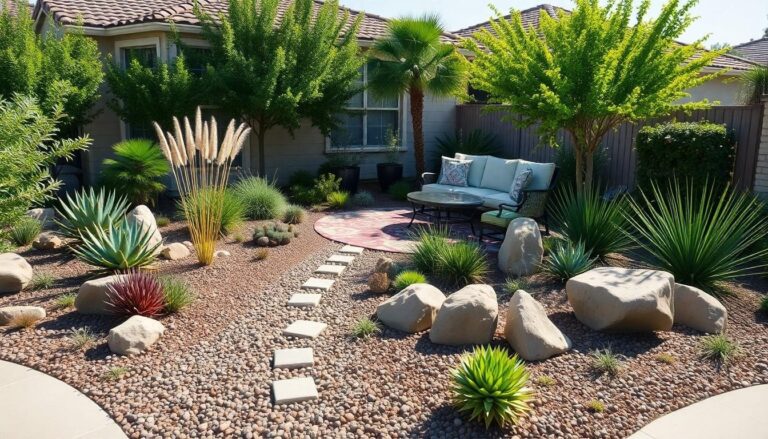White rocks for landscaping are like the little black dress of outdoor design—timeless, versatile, and always in style. They add a touch of elegance that transforms any garden into a chic oasis. Whether it’s a zen garden or a modern patio, these gleaming stones can elevate the aesthetic without breaking the bank.
White Rocks For Landscaping
White rocks serve as a versatile element in landscaping design. Many homeowners and landscapers appreciate their ability to complement a wide range of garden themes. Selecting white rocks for pathways enhances aesthetic appeal while providing practical benefits. For example, using them as decorative ground cover leads to lower maintenance requirements compared to grass or traditional mulch.
Various types of white rocks exist, each with unique qualities. Marble chips offer a polished look and reflect sunlight, creating a bright environment. Crushed limestone provides a more natural appearance and serves as a base for other landscaping materials. River rocks in white hues create a serene setting, often used around water features or in zen gardens.
Installing white rocks involves straightforward techniques. It’s essential to prepare the area by removing weeds and ensuring proper drainage. Layering landscape fabric beneath the rocks promotes stability and prevents unwanted growth. This method ensures the longevity of the landscaping feature while allowing for easy adjustments in the future.
Utilizing white rocks enhances contrast and draws attention to plants and structures. They define spaces and pathways, guiding visitors through a garden. The striking appearance of white against vibrant greens and colorful flowers instantly elevates any design.
In addition to beauty, white rocks offer ecological benefits. They aid in moisture retention within the soil while reducing erosion around plant roots. Incorporating them into landscaping practices contributes to a sustainable environment. Consider these factors when planning a landscaping project using white rocks.
Benefits Of Using White Rocks

White rocks present various benefits that enhance landscaping designs. Their aesthetic and practical advantages make them a favored choice among homeowners and landscapers.
Aesthetic Appeal
White rocks contribute a clean, modern look to any outdoor space. They create a striking contrast against vibrant plants and flowers, drawing the eye to key garden features. Incorporating white rocks into landscaping enhances visual interest, offering versatility in design themes. Various styles, from minimalist to lush gardens, benefit from their bright, reflective surfaces. Homeowners often select white rocks to create tranquil environments, such as zen gardens or contemporary patios, reinforcing a sense of peace in outdoor settings.
Durability And Longevity
Durability characterizes white rocks, making them suitable for various landscaping projects. They withstand harsh weather conditions, ensuring they maintain their appearance over time. Unlike organic materials, white rocks do not decompose, reducing the need for frequent replacement. Their longevity translates into cost-effectiveness, as homeowners avoid continual spending on maintenance. Choosing white rocks can also mitigate issues like compaction and erosion, offering a stable foundation for garden features. Overall, their robust nature proves advantageous for creating lasting outdoor spaces.
Types Of White Rocks
White rocks come in various forms, each contributing unique qualities to landscaping projects. They fit effortlessly into different designs, enhancing the visual appeal and functionality of outdoor spaces.
Crushed Stone
Crushed stone features smaller particles, making it ideal for decorative paths and ground cover. It provides excellent drainage and reduces weed growth, increasing the efficiency of landscaping. Options like crushed marble present a sleek look that aligns with contemporary aesthetics. Affordable and versatile, crushed stone serves multiple purposes, from driveways to garden beds. Its smooth texture creates an inviting atmosphere, complementing green plants beautifully.
Boulders And Granite
Boulders and granite provide a striking focal point in garden designs. These large stones lend a natural, rugged charm that contrasts well with soft plantings. Granite, known for its durability, withstands harsh weather and retains its color over time. Boulders can serve as seating areas, decorative accents, or natural borders, adding dimension to landscapes. Their substantial presence can transform ordinary gardens into extraordinary outdoor spaces.
Installation And Maintenance
Successful installation and maintenance of white rocks enhance their visual appeal and longevity. Proper planning ensures optimal placement and aesthetics.
Preparation And Planning
Site assessment plays a critical role in planning. Homeowners should measure the area, considering factors like sunlight and moisture levels. Selecting the right type of white rock, such as marble chips for pathways or boulders for focal points, creates balance in the landscape. Additionally, laying down landscape fabric before placing the rocks prevents weed growth and retains moisture. Establishing edging around rock areas promotes definition, making the design appear intentional and polished.
Care And Cleaning Tips
Regular maintenance preserves the beauty of white rocks. Occasional rinsing with water removes dust and debris, keeping them vibrant. For stubborn stains, using a non-toxic, eco-friendly cleaner can restore their appearance. Checking for weeds periodically remains essential, as timely removal ensures a tidy landscape. When shifting or settling occurs, repositioning the rocks helps maintain a consistent look. Consistent care contributes to the durability of white rocks, allowing them to remain a visually striking element in any garden design.
Cost Considerations
Evaluating costs for white rocks in landscaping involves understanding various factors. Pricing for white rocks varies by type, availability, and location. For example, crushed limestone typically ranges from $30 to $50 per ton, while marble chips can be more expensive, costing anywhere from $100 to $200 per ton.
Delivery fees impact overall expenses, especially for bulk orders. Transportation can add between $50 and $150, depending on distance from the supplier. Therefore, considering local sources may reduce transportation costs.
Installation expenses also influence the budget. Hiring professionals for installation generally costs around $50 to $100 per hour, with an average installation spanning 10 to 20 hours based on area size and complexity. Alternatively, DIY installations may save labor costs while increasing time commitment.
Maintenance costs remain minimal compared to traditional mulch or grass. White rocks typically require occasional cleaning and repositioning, with expenses averaging $20 to $50 annually for eco-friendly cleaning products and tools. Such low maintenance solidifies their appeal as a cost-effective choice over time.
Long-term savings result from reduced water and fertilizer needs, contributing to a sustainable landscape. Water conservation becomes crucial, as white rocks help retain soil moisture effectively, further minimizing costs associated with irrigation.
Homeowners and landscapers often view white rocks as a smart investment due to their durability. Unlike organic materials, white rocks won’t decompose, leading to fewer replacements and ongoing expenses.
Ultimately, weighing initial costs against these long-term benefits reveals the financial advantages of choosing white rocks for landscaping projects.





